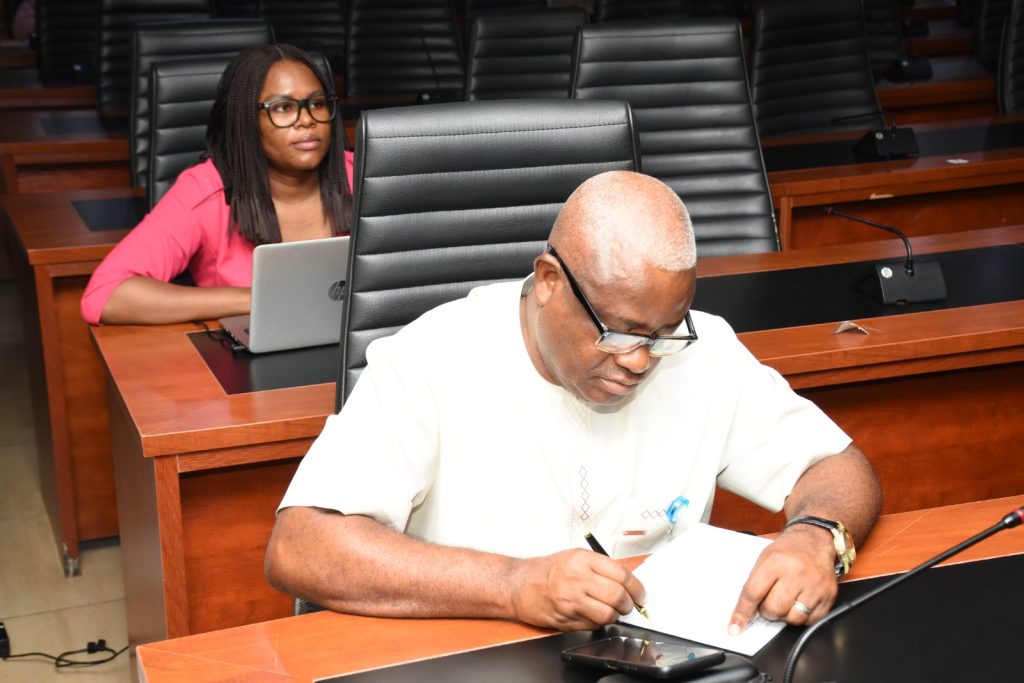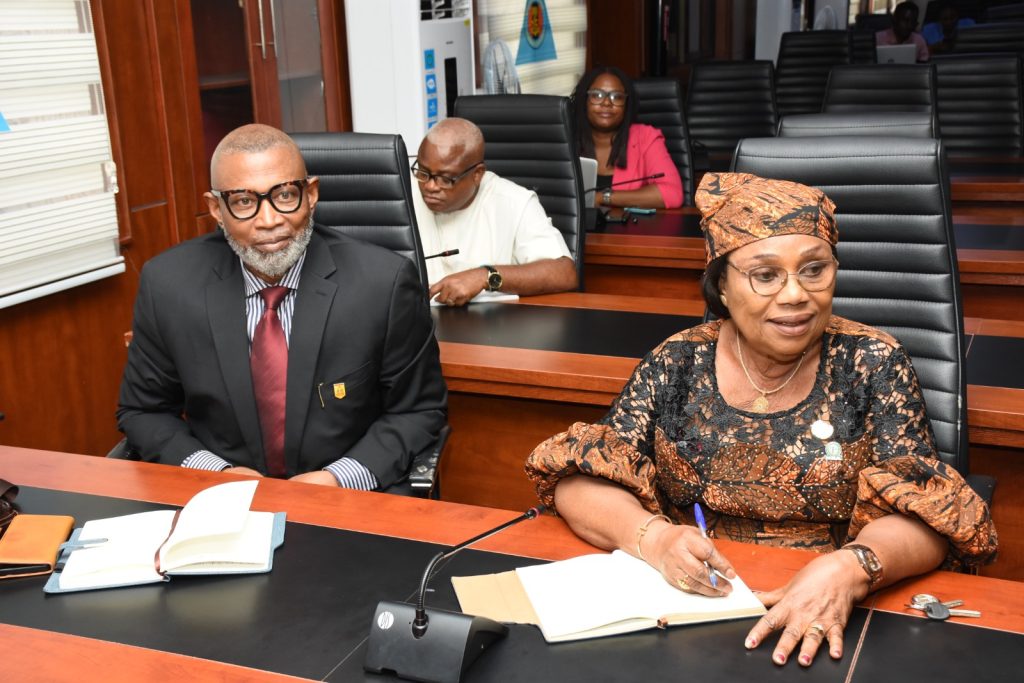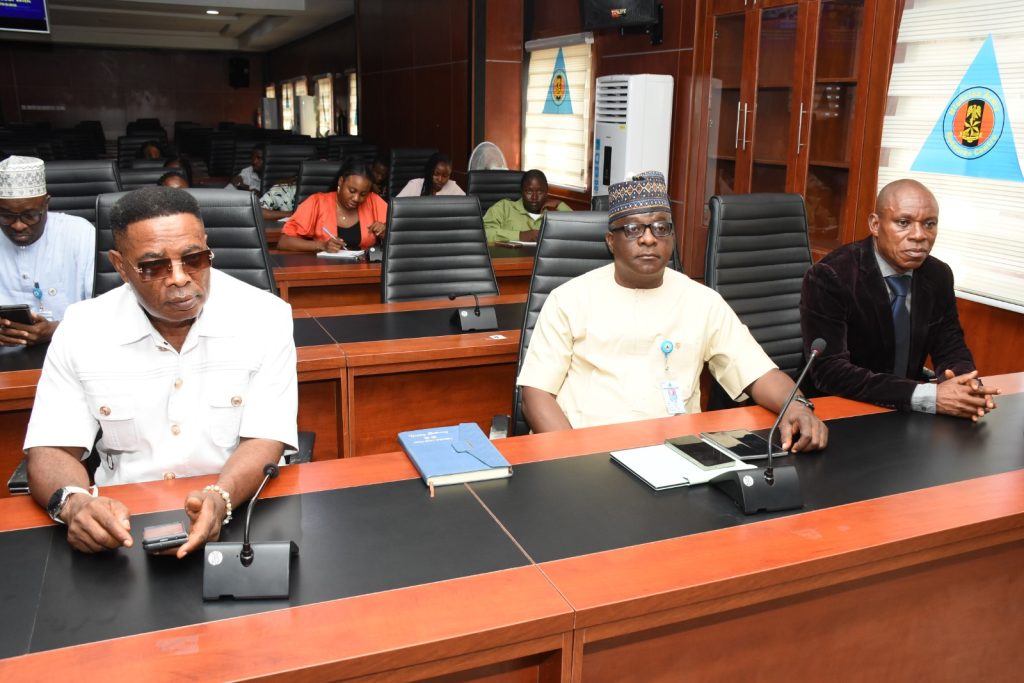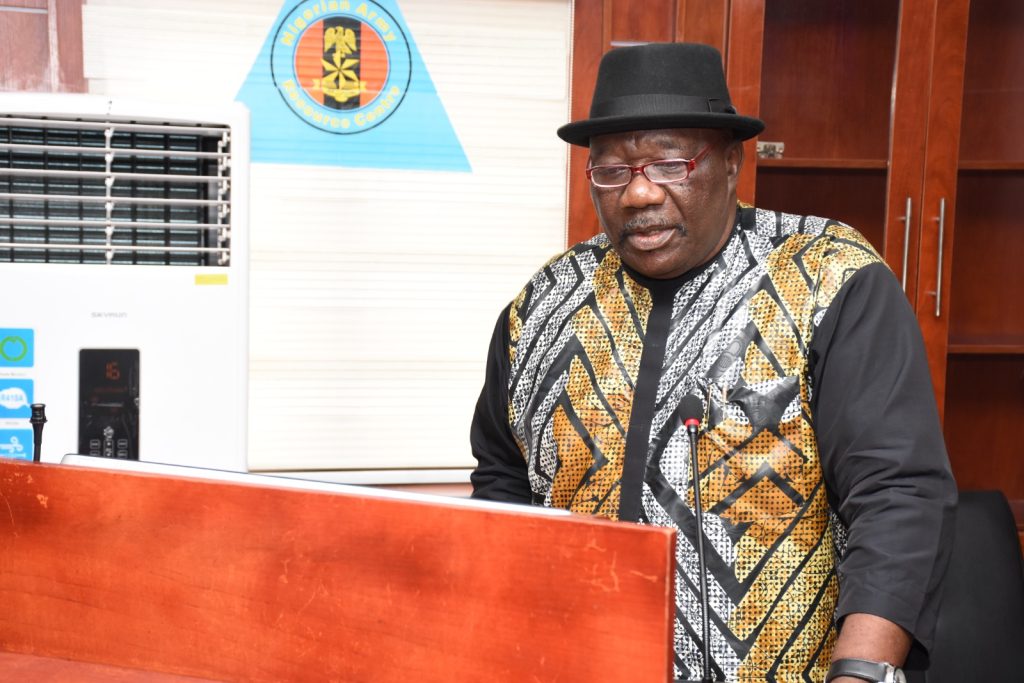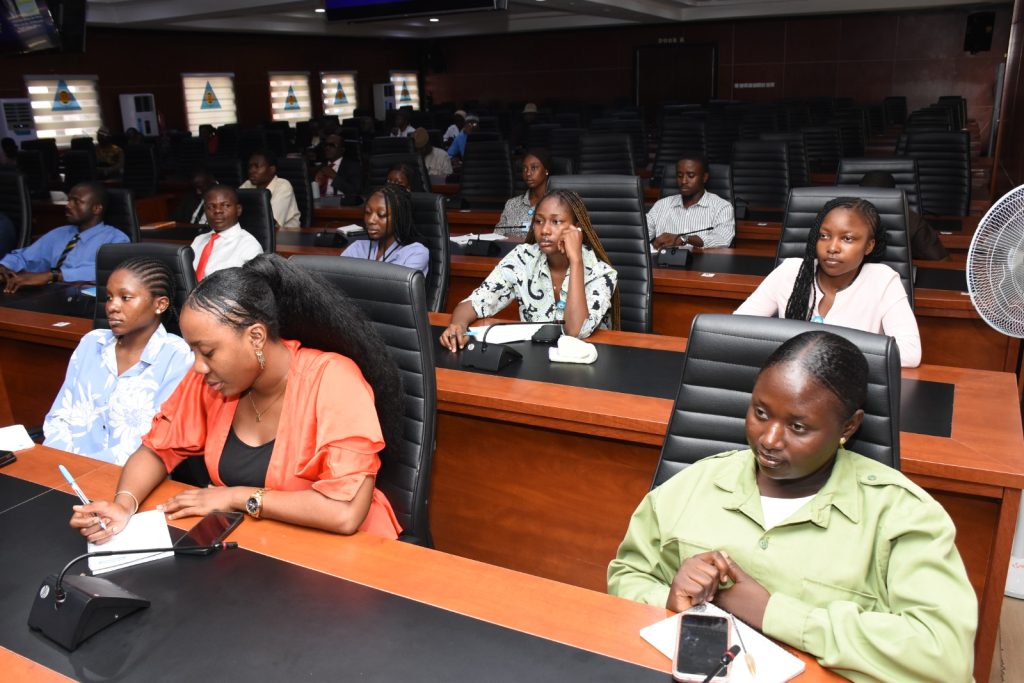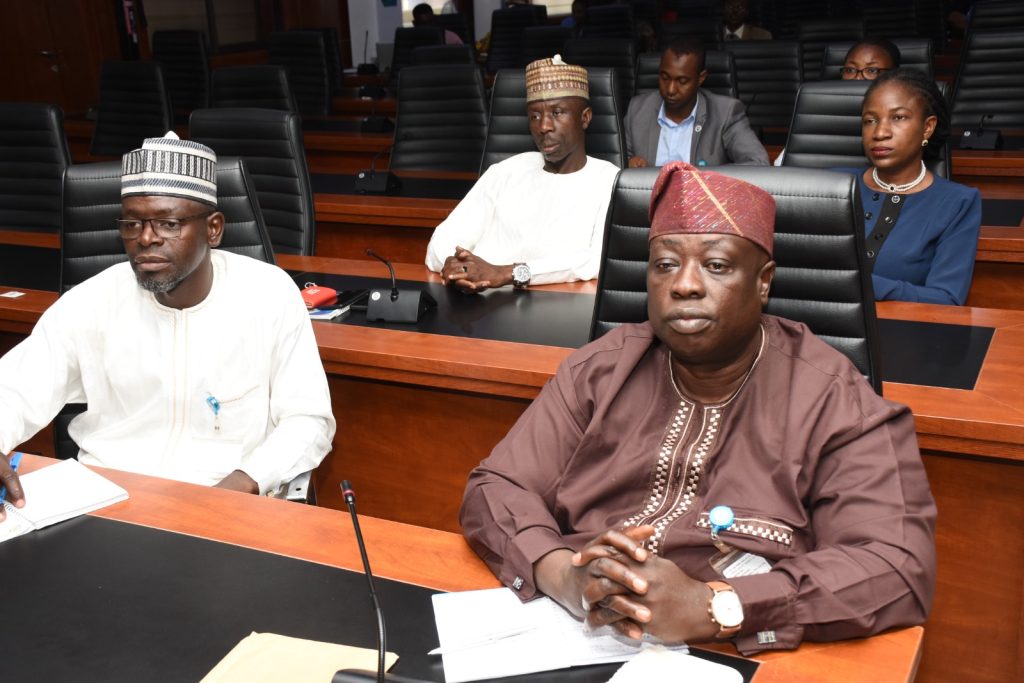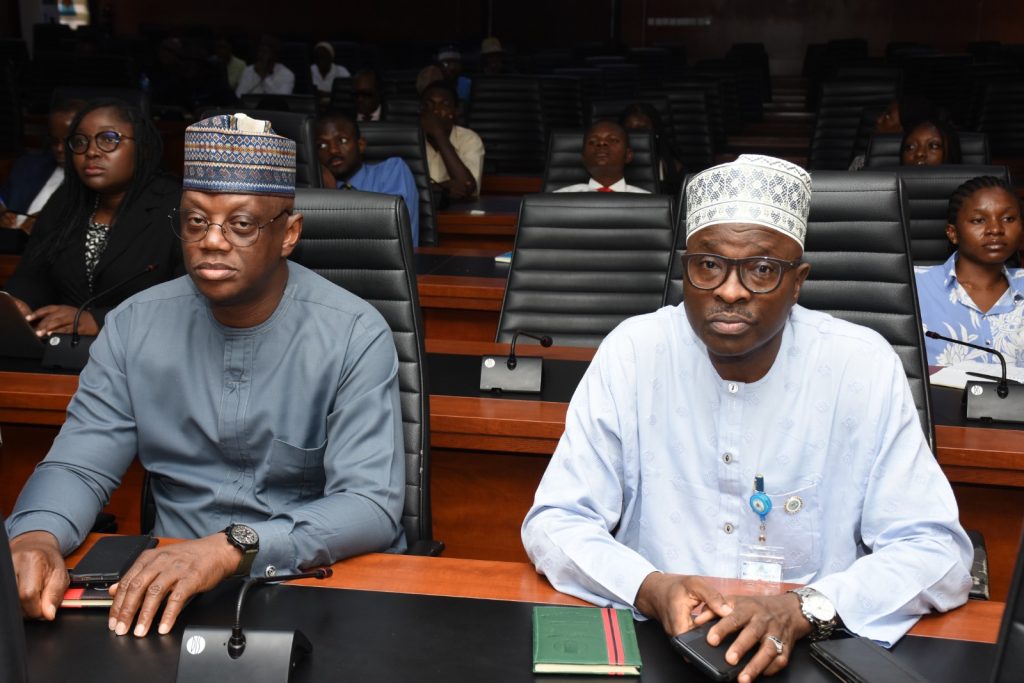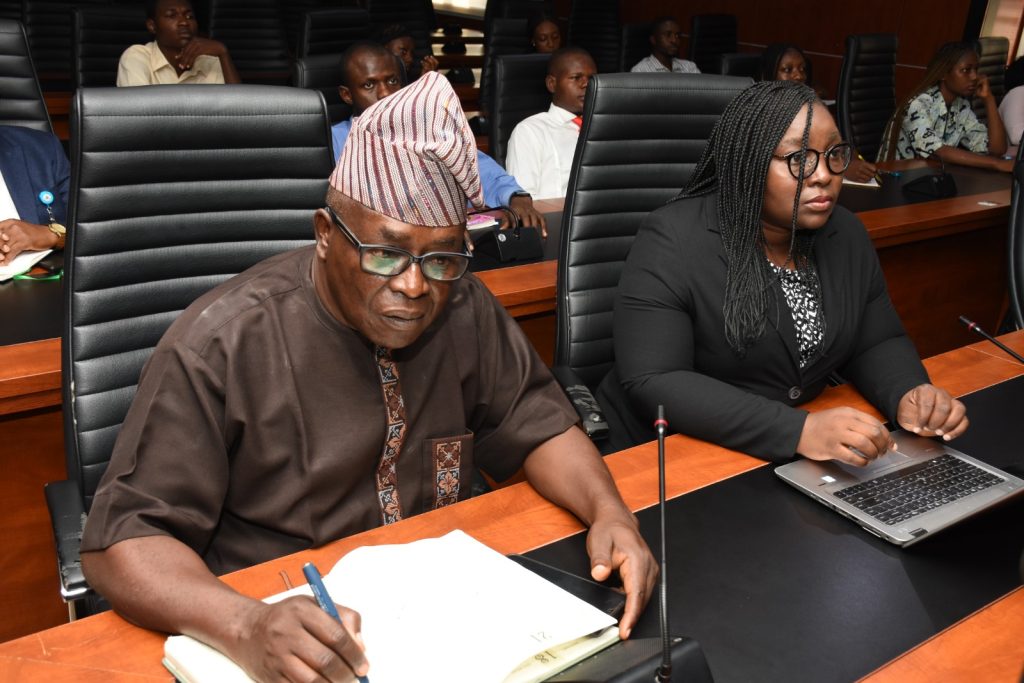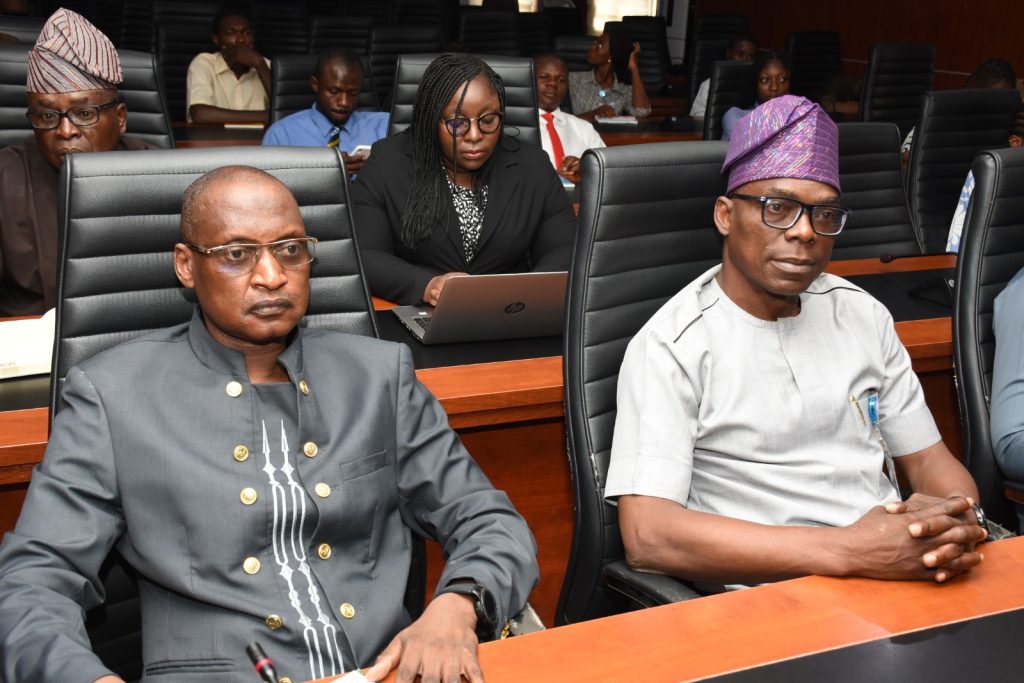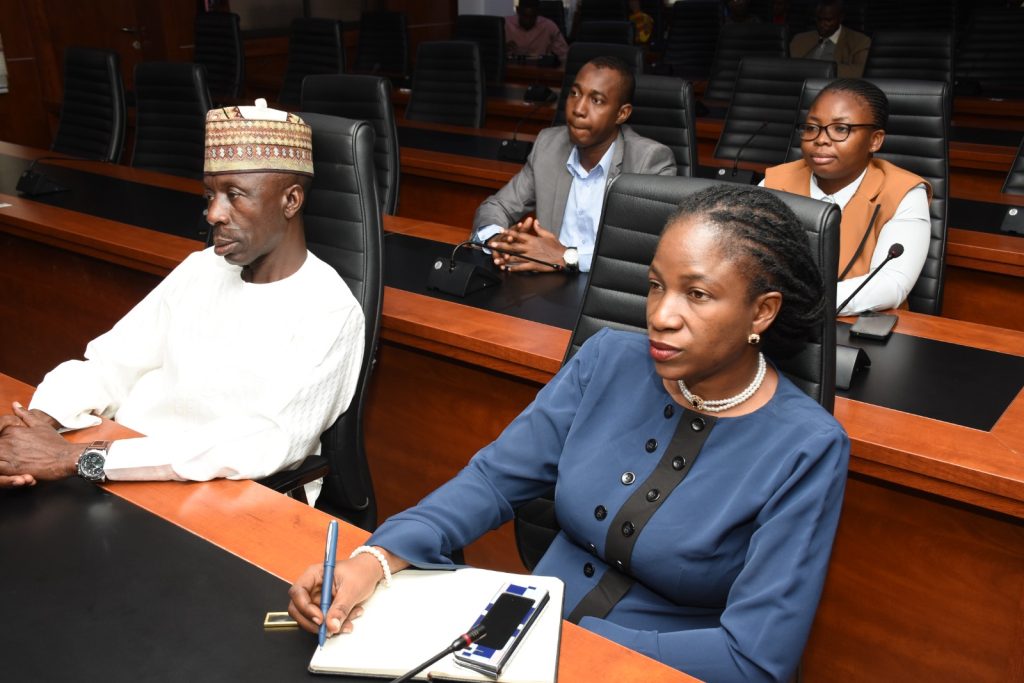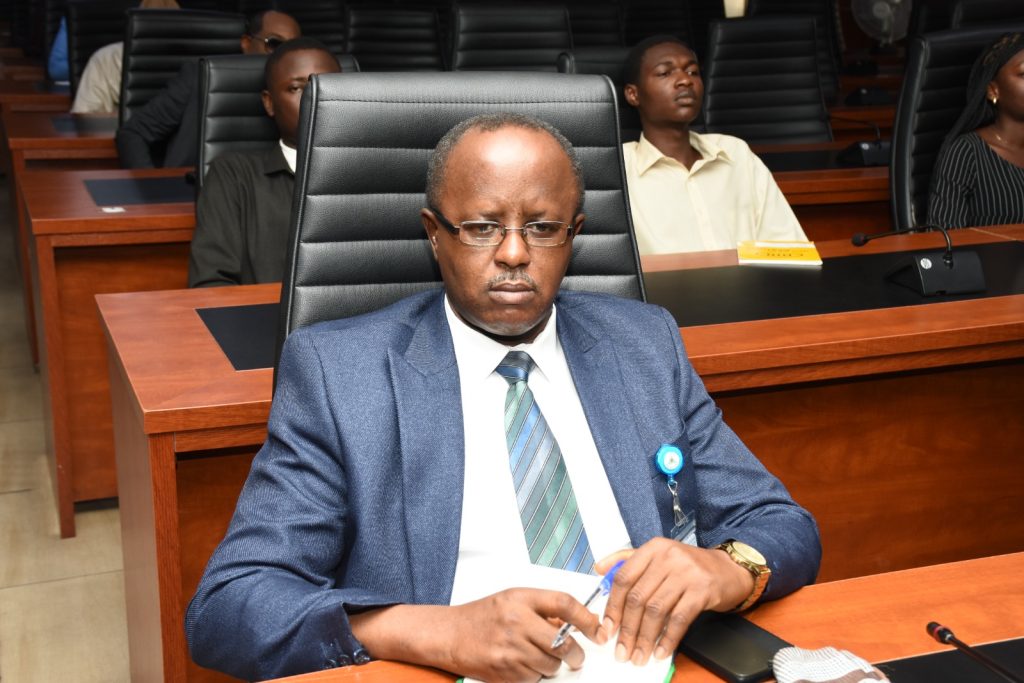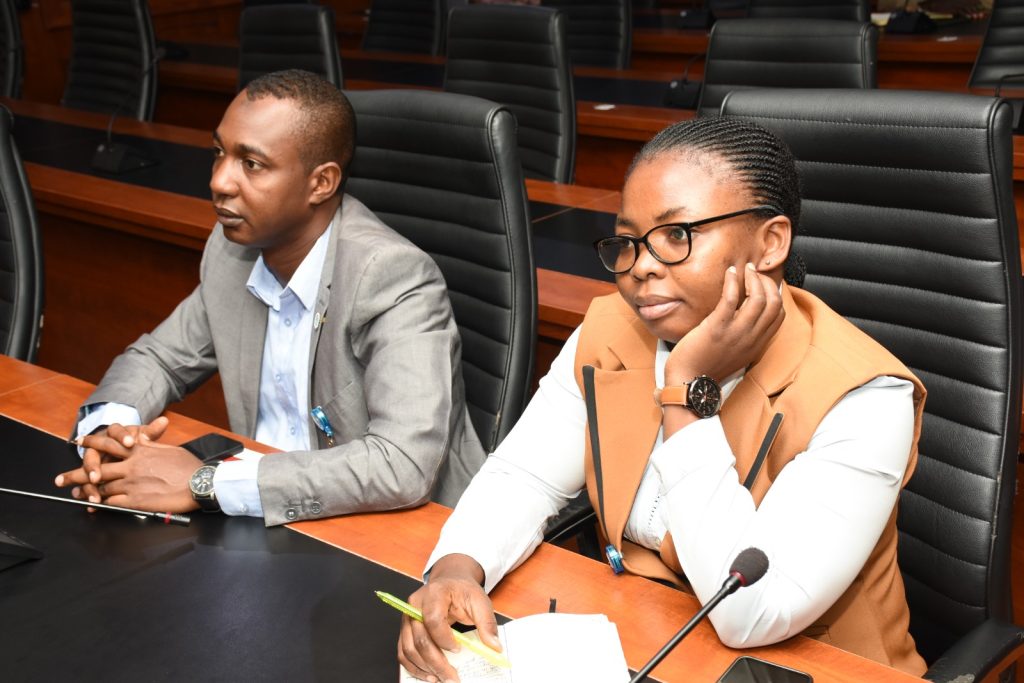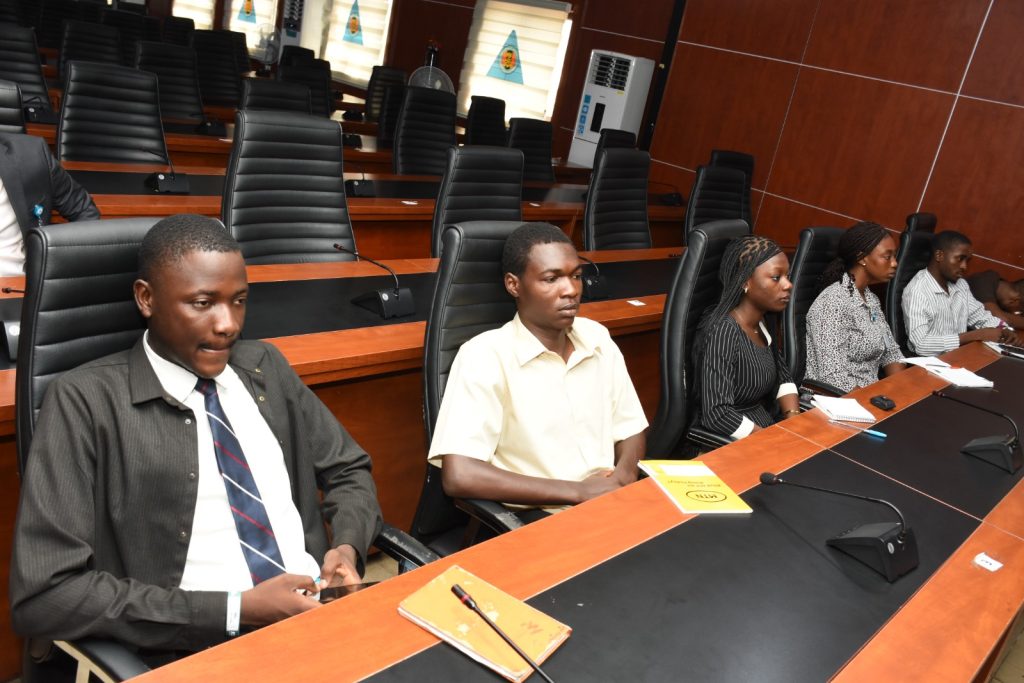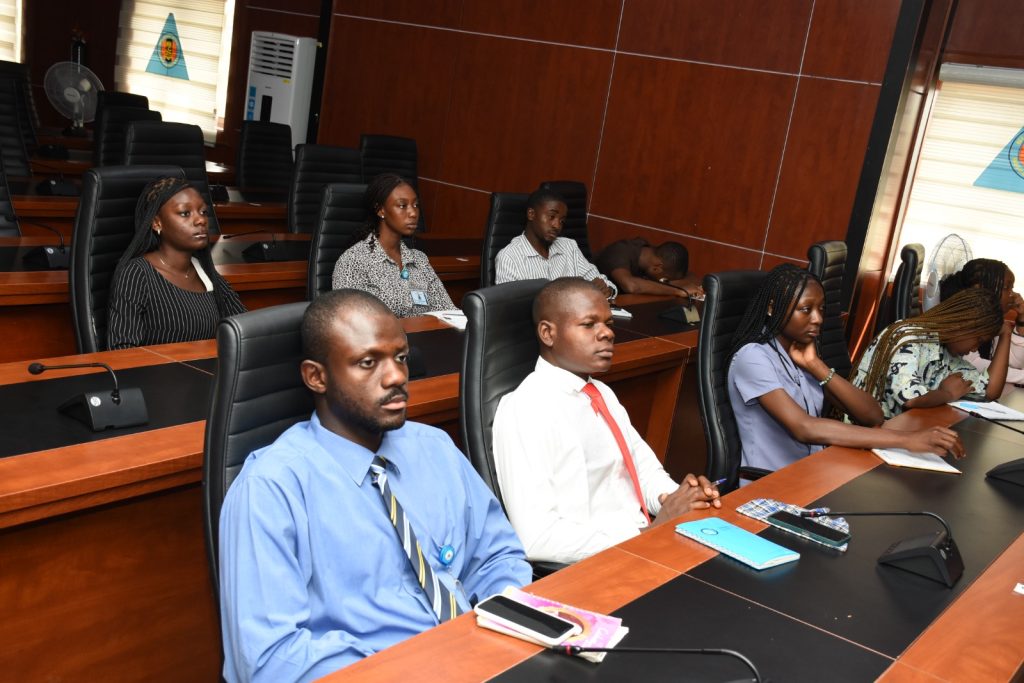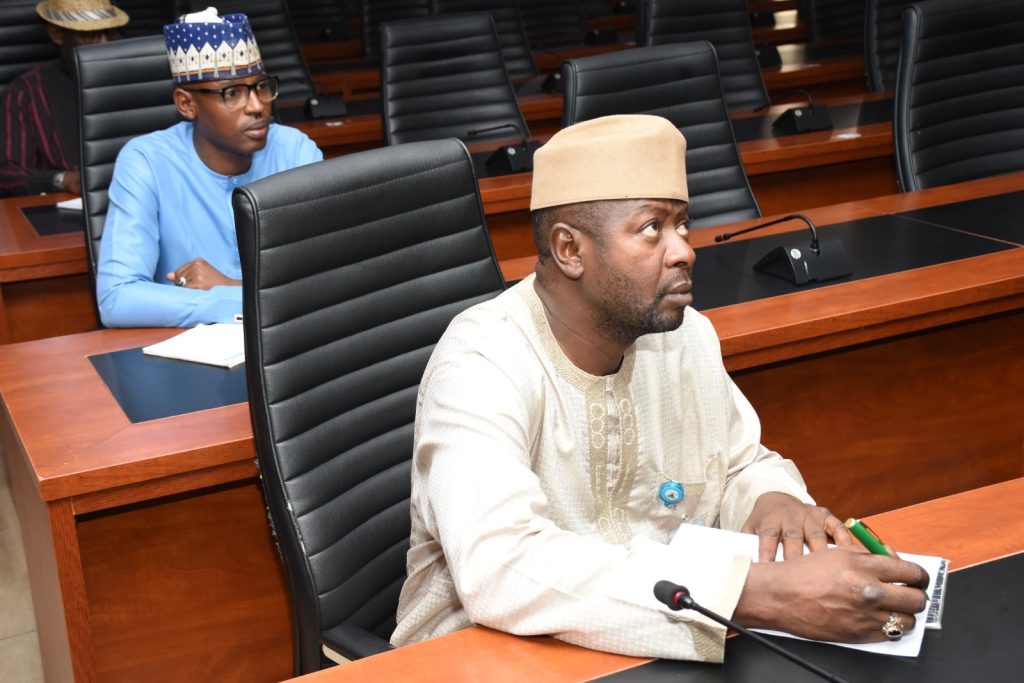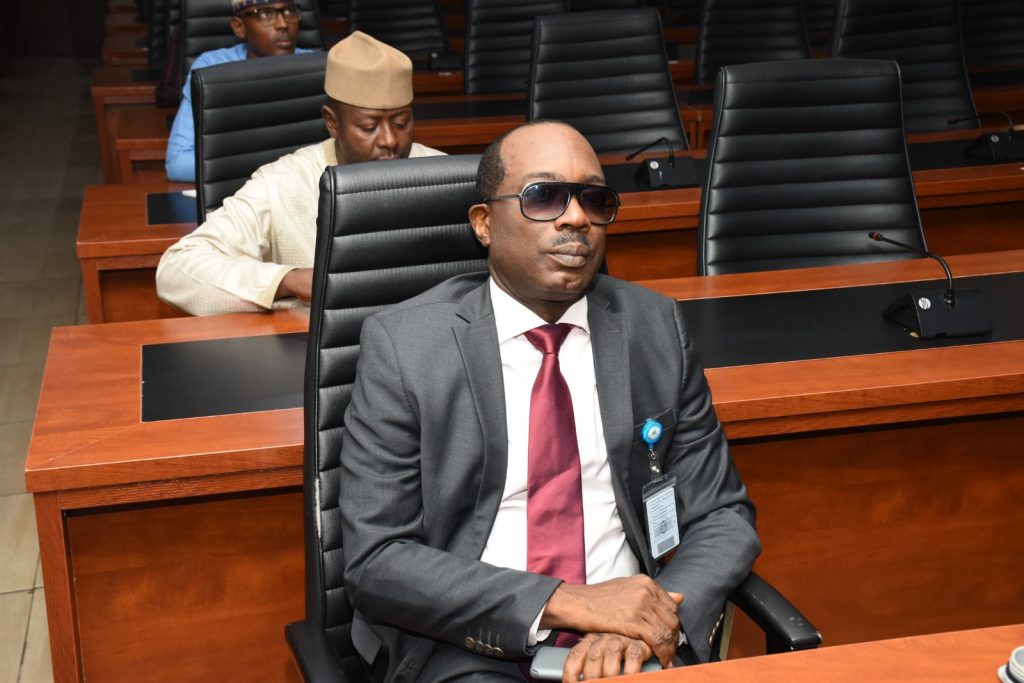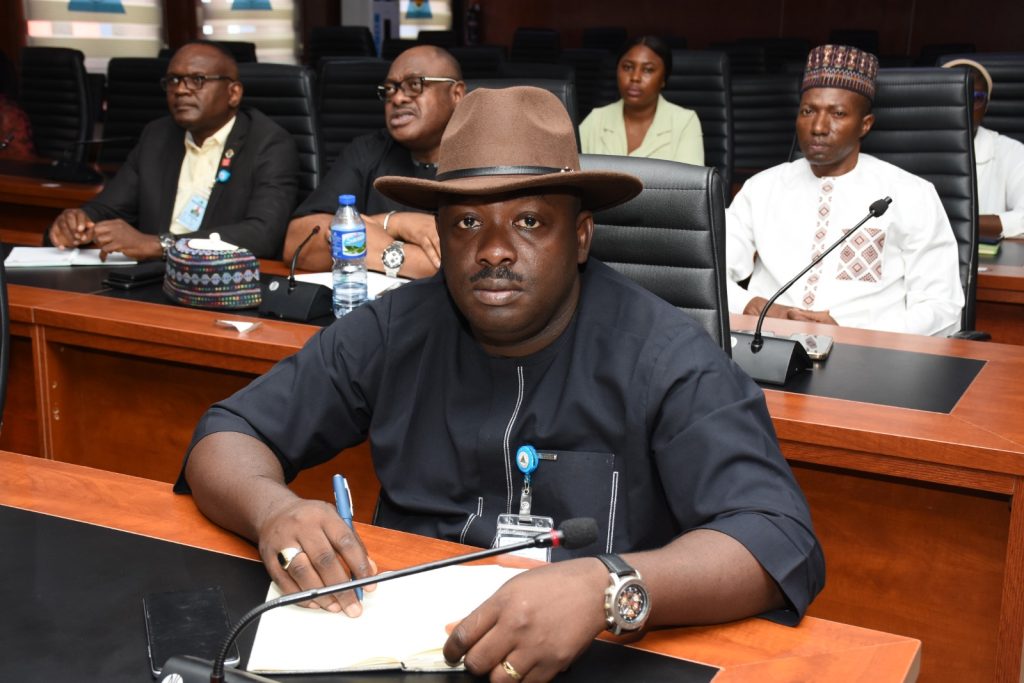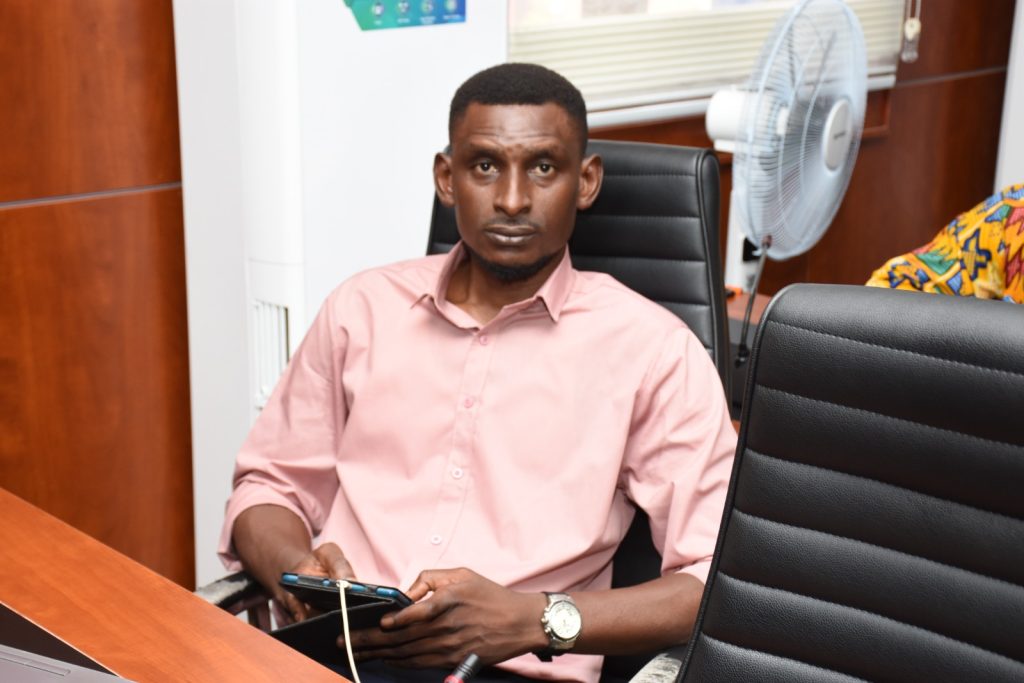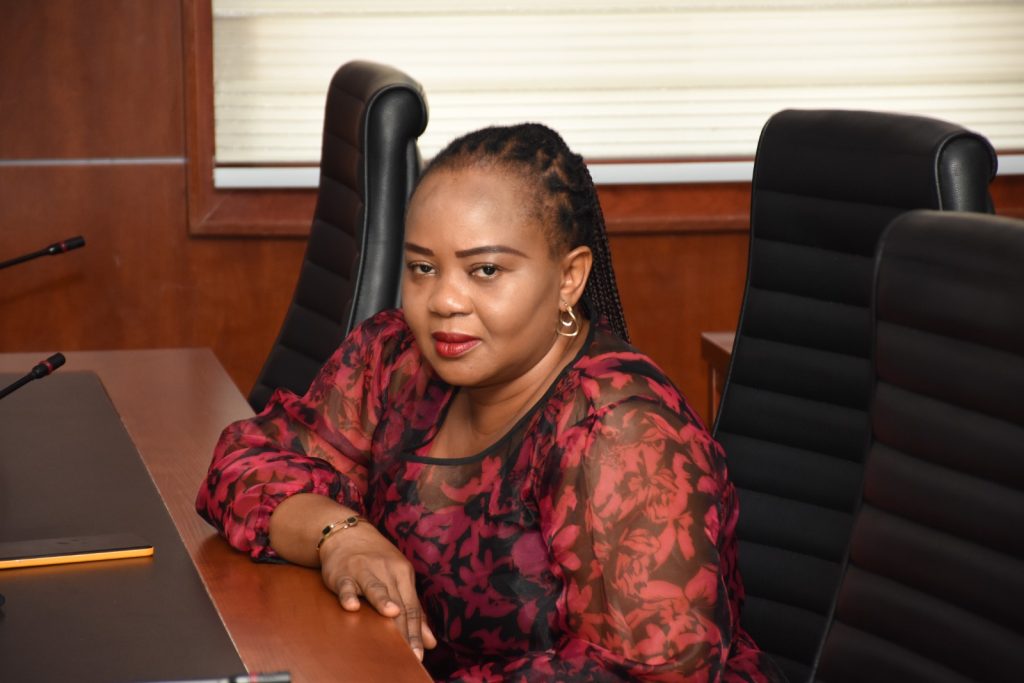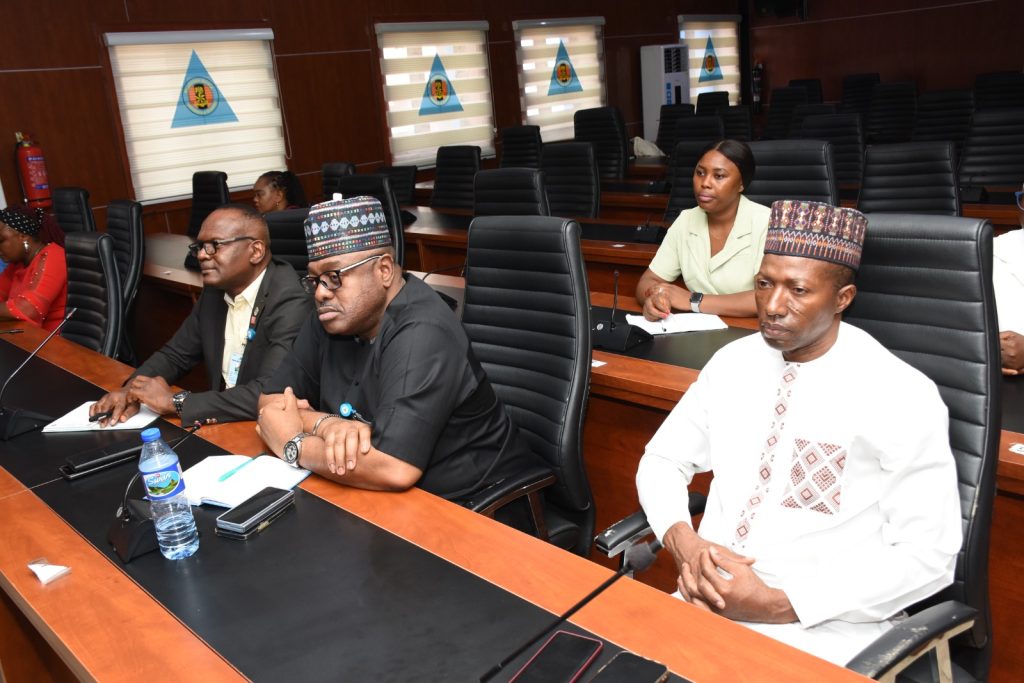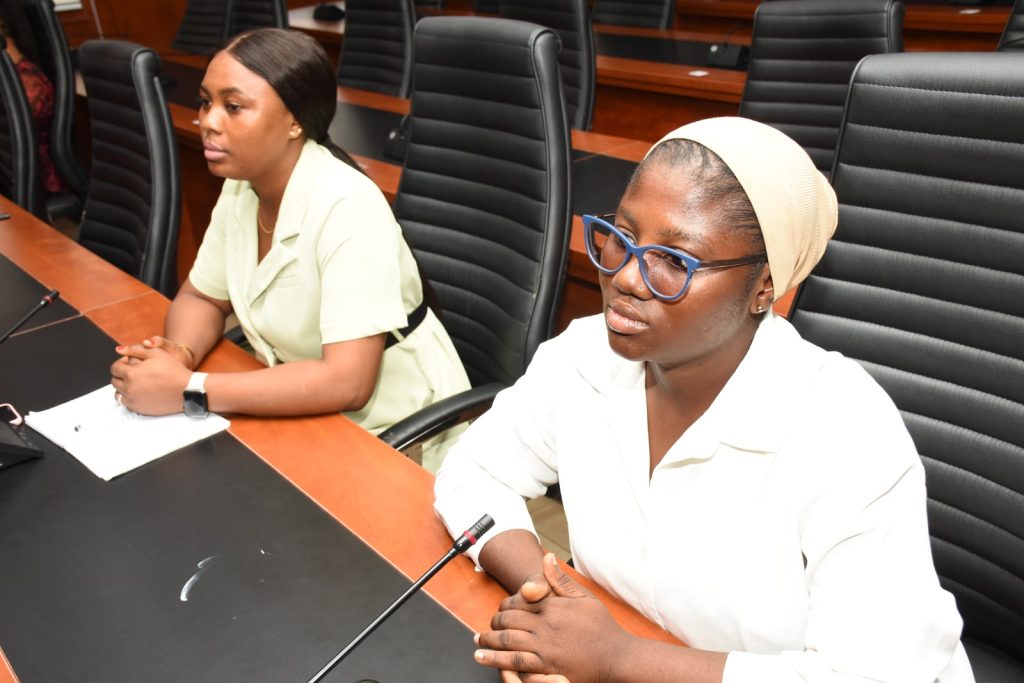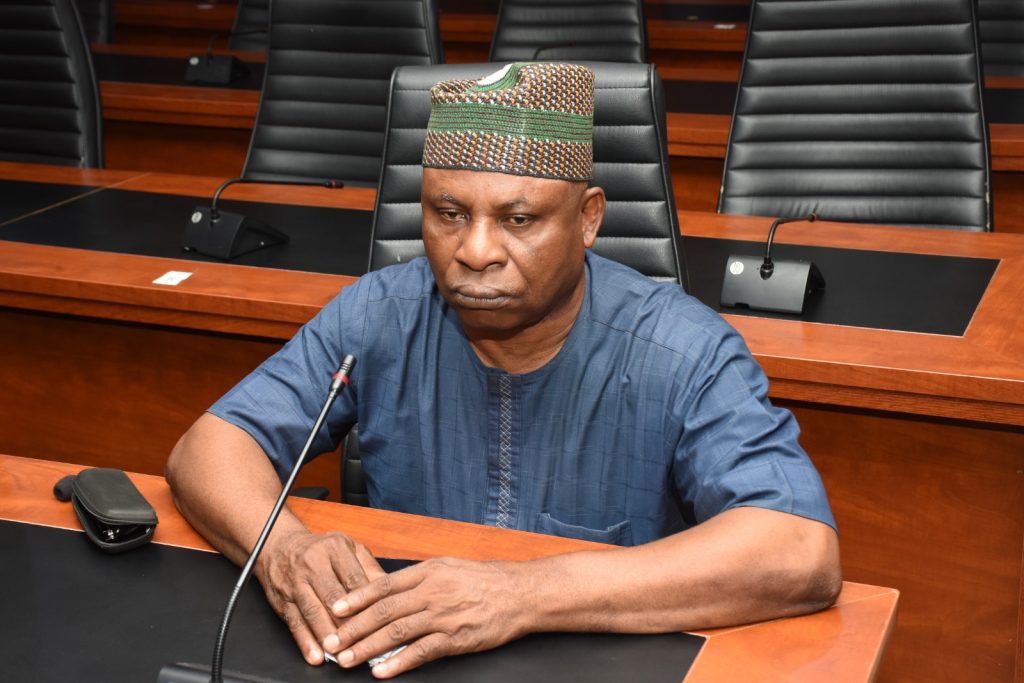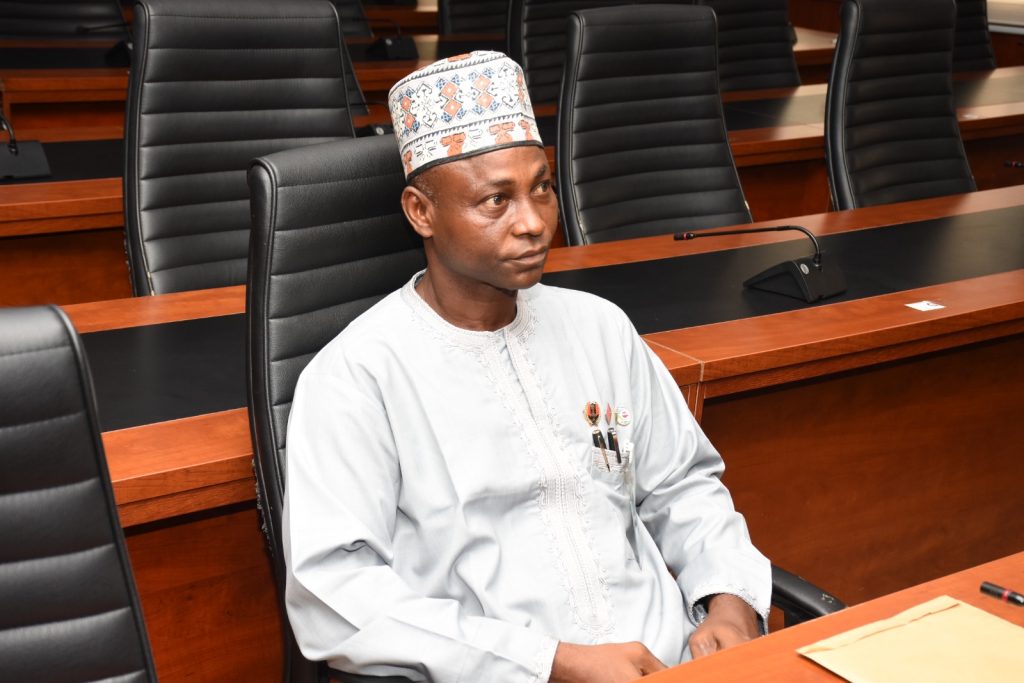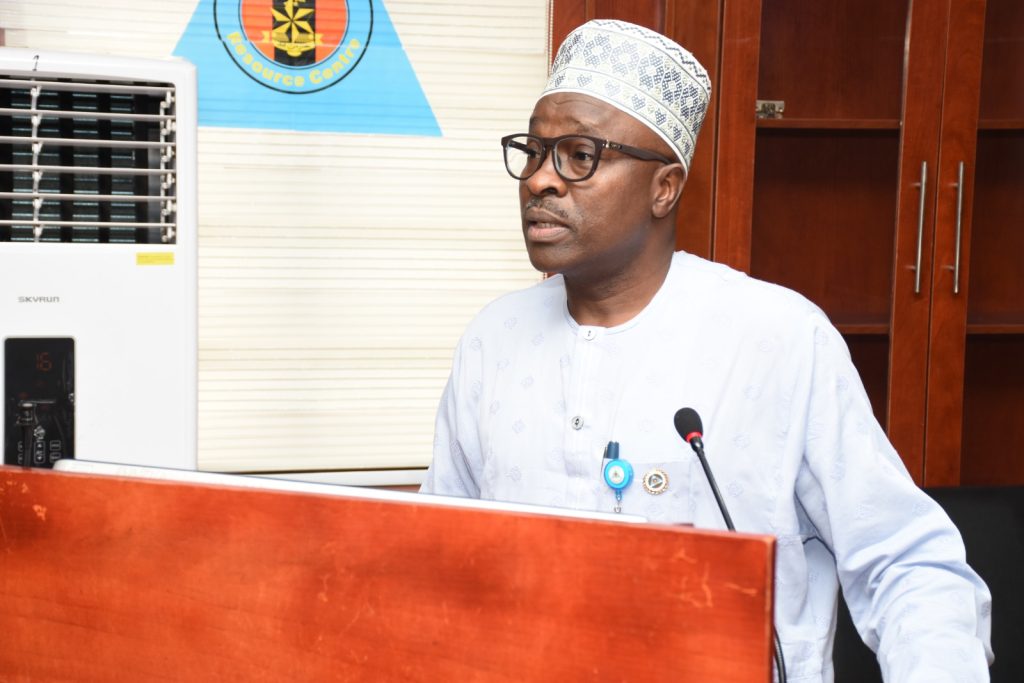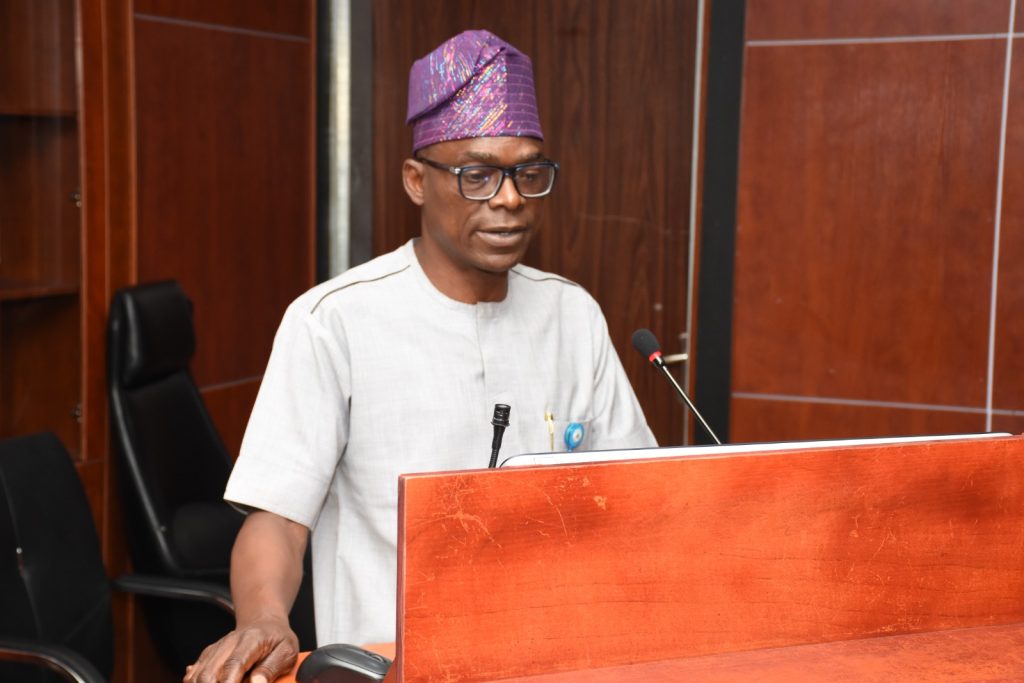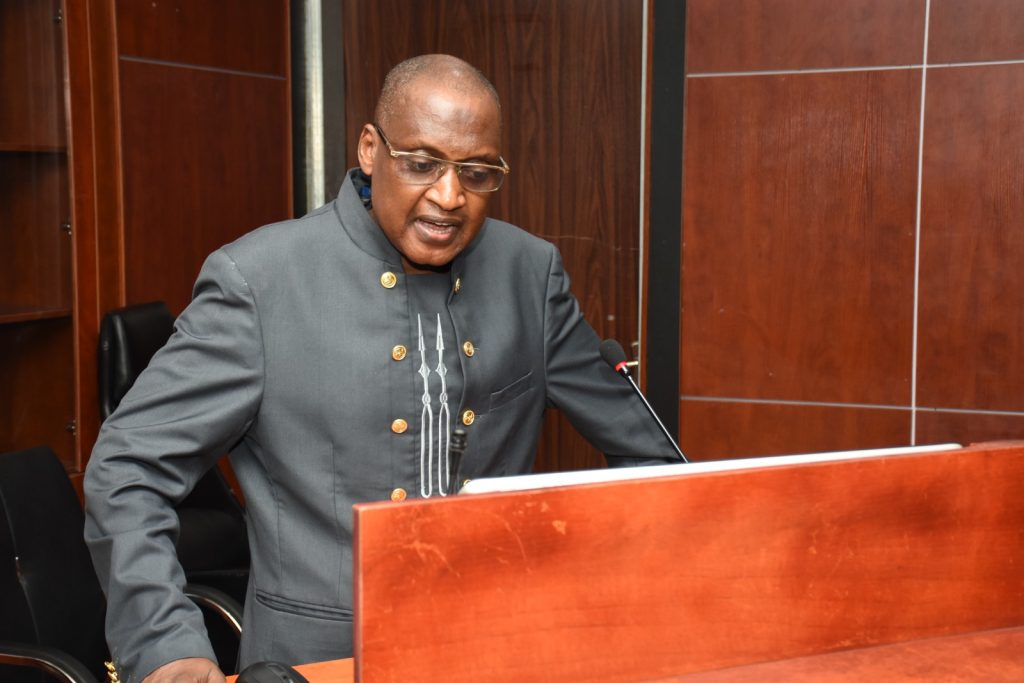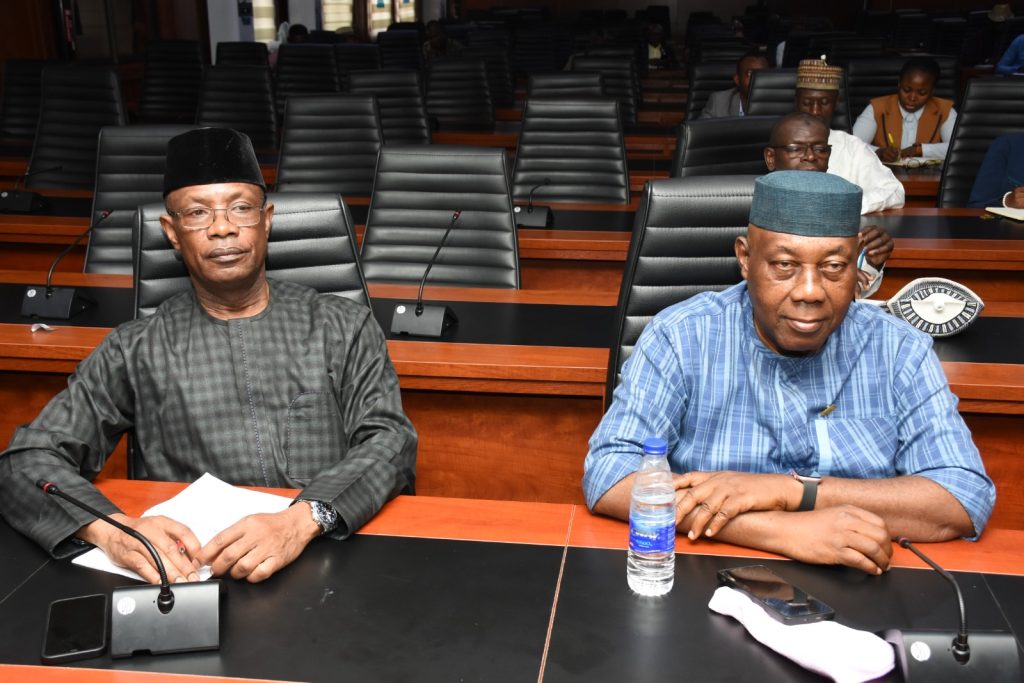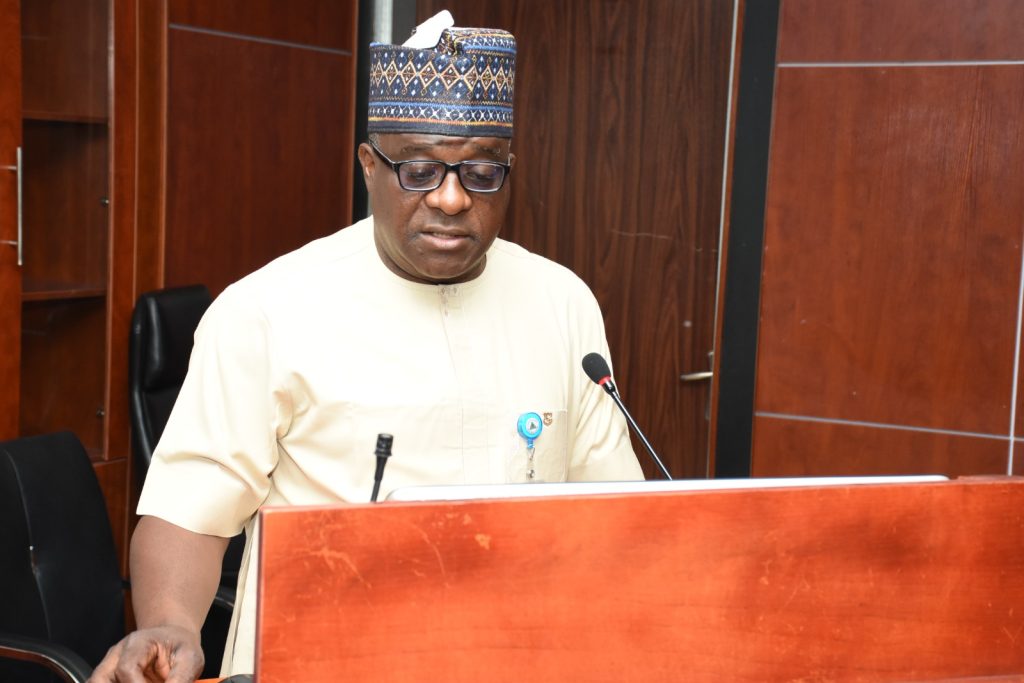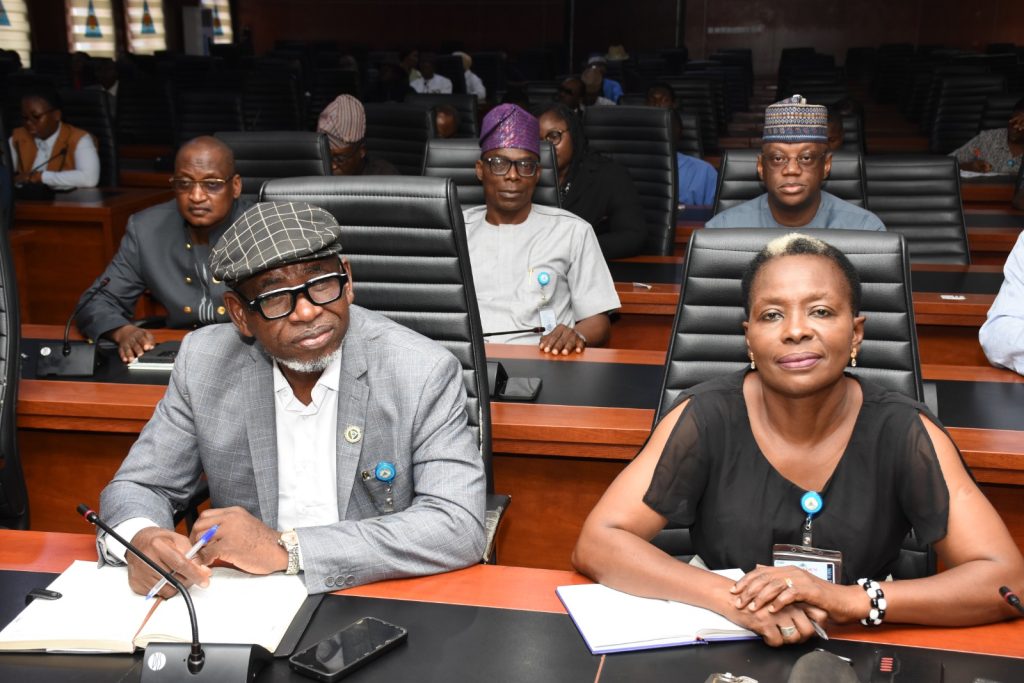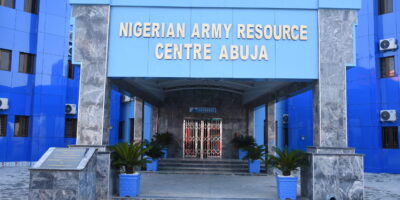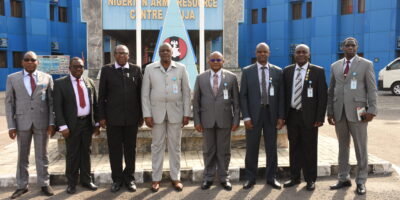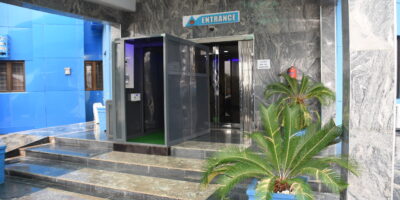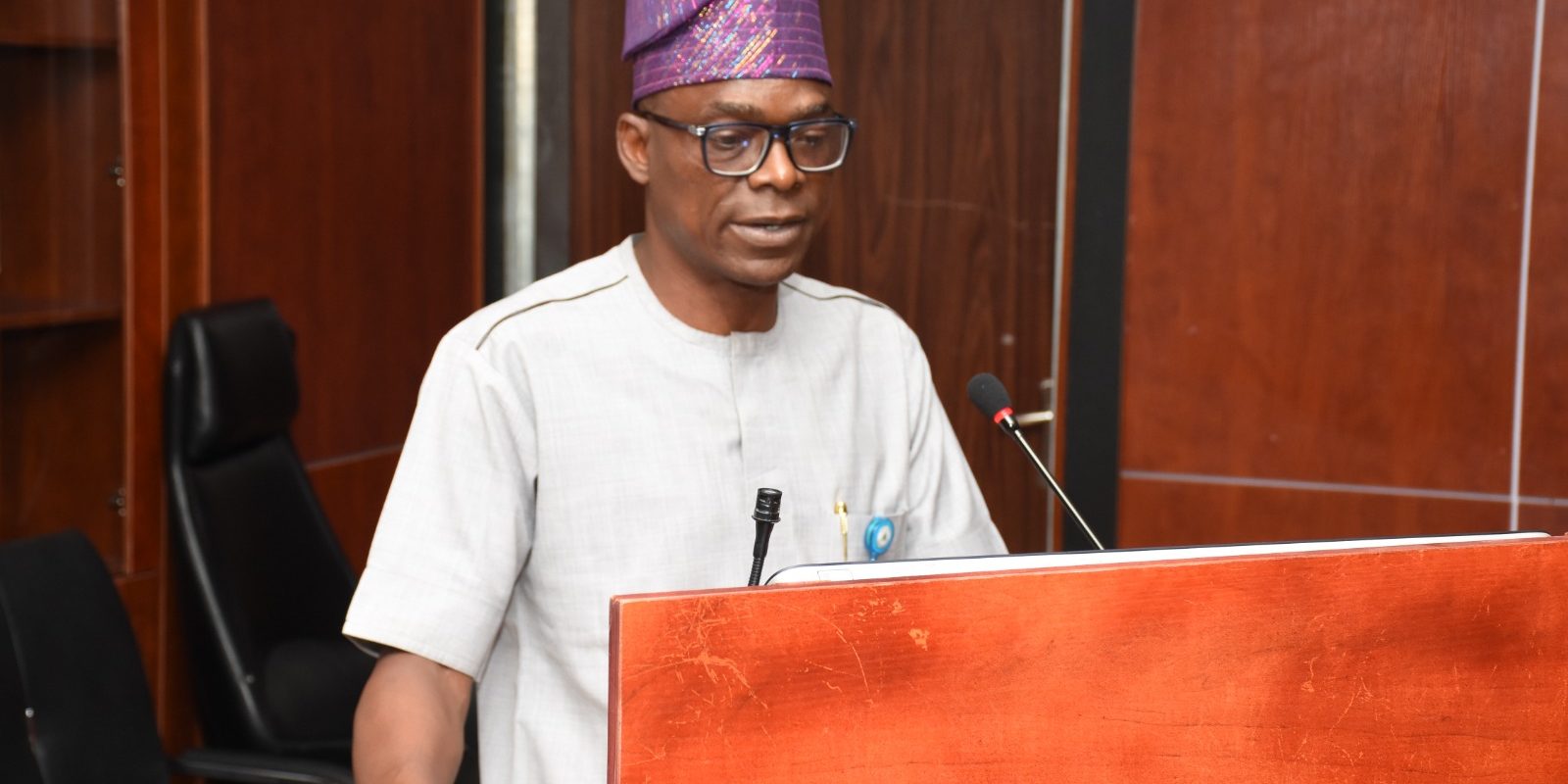Nigerian Army Resource Centre (NARC) Weekly Subject Experts’ Presentation was held at Hall C TY Buratai Block, Abuja. There were five presentations made by the Subject Experts on, West Africa and Gulf of Guinea, Nigeria, United States of America, United Kingdom and Indian Sub- Continent.
The first presentation was made by Maj Gen OO Adeleke (Rtd) subject expert on West Africa and Gulf of Guinea, his presentation Centred on how, Liberians Brace for Price Hikes as US 10 Percent Tariff Takes effect. allAfrica reported on 07 April 2025 that the Chairman of the CDC-Council of Patriots (CDC-CoP), Foday N. Massaquoi, had raised alarm over the economic impact of the new 10% US tariff on Liberia, warning that the policy will lead to higher prices on American products and worsen the country’s struggling economy. The new tariff, announced by U.S. President Donald J. Trump on April 2, 2025, applies to imports from over 150 countries, including Liberia. The measure took effect on April 5, 2025 and is part of a global trade retaliation policy and Liberia has been hit with a reciprocal 10% tariff following its own 10% tax on American goods. Massaquoi outlined four major consequences of the tariff on Liberia which include, higher prices for consumers-essential goods such as food, fuel, and pharmaceuticals imported from the U.S. will become more expensive, affecting ordinary citizens’ purchasing power, increased business costs- as companies relying on American imports will struggle with higher expenses, potentially leading to job losses and wage cuts.
In his analysis and lessons for Nigeria Maj Gen OO Adelek (Rtd) noted that, Trade and Investment Framework Agreement (TIFA) which was signed in 2000, provides a platform for dialogue on trade and investment issues between Nigeria and the US. African Growth and Opportunity Act (AGOA) through which Nigeria is eligible for AGOA benefits, allowing duty-free exports to the US. However, recent US tariff policies have raised concerns about the future of AGOA. US President Donald Trump has imposed a 14% reciprocal tariff on Nigerian exports, citing what the White House claims is a 27% tariff levied by Nigeria on US goods. Known as the “Liberation Day” tariffs, this move is part of Trump’s global strategy to address trade imbalances. With key Nigerian exports such as crude oil, cocoa, and agricultural goods facing higher costs, growing concerns about reduced demand could threaten Nigeria’s $10 billion yearly exports to the US.
This development also raises questions about Nigeria’s status under the African Growth and Opportunity Act (AGOA), which grants duty-free access to the US market. Nigeria’s response was to ban the importation of 25 items, including key agricultural and pharmaceutical products from the US. The move, enforced under the new Import Prohibition List and announced by the Nigerian Customs Service, is part of Nigeria’s push to boost local manufacturing and reduce dependence on foreign goods. However, the US government has condemned the ban, calling it a violation of World Trade Organization (WTO) rules and a threat to the $14 billion trade relationship between the two nations.
He recommended that, The Federal Ministry of Trade and Investment in conjunction with the Nigeria Customs Service should stop the ban slammed on US goods and rather apply the use of tariffs as an effective way to correct trade imbalances with the US.
The second presentation was made by Maj Gen UN Babangida subject expert on Nigeria, his presentation discussed on how, 2025 Flood Forecast: Benue, Lagos, Rivers, Jigawa, FCT, and 26 Other States at High Risk. The Nigeria Hydrological Services Agency (NIHSA) Thursday warned that 1,249 communities across 176 local government areas (LGAs) in 33 states and the FCT fall within the high-flood risk areas in 2025. The warning was issued during the official presentation of the 2025 Annual Flood Outlook (AFO) by the Minister of Water Resources and Sanitation. According to the forecast, an additional 2,187 communities in 293 LGAs across 31 states and the FCT are expected to experience moderate flood risk this year. Others are; Jigawa, Kebbi, Kogi, Kwara, Lagos, Nasarawa, Niger, Ogun, Ondo, Osun, Oyo, Rivers, Sokoto, Taraba, Yobe, and Zamfara. Utsev noted that floods were among the most devastating natural disasters affecting lives, property, agriculture, and infrastructure. The 2025 forecast is aimed at raising awareness and encouraging preparedness among citizens, particularly in vulnerable communities.
This year’s theme on community preparedness and adaptation is timely, given the recurring floods and their impact on livelihoods and infrastructure.657 communities in 52 Local Government Areas (LGAs) are expected to experience high flood risk between April and June. 544 communities in 142 LGAs between July and September; and 484 communities in 56 LGAs from October to November. Moderate flood risk is projected for 445 communities in 116 LGAs from April to June. Initiatives such as a National Flood Insurance Programme, to be piloted in Kogi and Jigawa states, and the Niger Flood Project to boost river navigation, flood control, and climate resilience.
In his analysis and lessons for Nigeria Maj Gen UN Babangida stressed out that, Flooding is now a nationwide threat, affecting nearly all geopolitical zones in Nigeria. Localized flood response plans are essential, as risks vary by community and LGA. Early warning systems must be strengthened and effectively communicated to vulnerable populations. Urban flooding exposes poor drainage and infrastructure planning in major Nigerian cities. Rising sea levels demand urgent climate adaptation, especially in coastal states. Agricultural production and food security are under threat due to flood-prone farmlands.Disaster insurance can cushion economic losses, but must be expanded beyond pilot states. Flood forecasting provides critical data for planning and risk reduction at all government levels. Community awareness and preparedness remain weak, increasing vulnerability during floods. Disaster response coordination across government tiers is inadequate, leading to delayed action. Key infrastructure is repeatedly damaged, signalling the need for flood-resilient construction. Public health emergencies often follow floods, highlighting poor WASH infrastructure and planning. Indigenous knowledge systems should be integrated into modern flood management strategies.
Multi-stakeholder collaboration is vital for building resilient and prepared communities. Sustainable funding is lacking, limiting proactive flood mitigation efforts.
He recommended that The Federal Ministry of Water Resources and Sanitation (FMWRS) should expand and fund the National Flood Insurance Programme to cover more high-risk communities beyond pilot states.
The third presentation was made by Maj Gen BA Tsoho subject expert on United States of America, his presentation Centred on how U.S and Russia Swap Prisoners in UAE. On 10 April 2025, the British Broadcasting Corporation (BBC) reported on a rare moment of cooperation between Washington and Moscow, a dual national prisoner has been released and is heading back to the United States following a high-level prisoner swap between the two nations. The exchange, which took place in Abu Dhabi, the UAE Capital was confirmed by senior U.S. officials on Saturday. The individual, by name Ksenia Karelina holds both U.S. and Russian citizenship was sentenced to twelve years in prison and held in Russia on espionage-related charges in August 2024. The U.S. authorities have consistently denied the allegations, calling the imprisonment unjust and politically motivated. The deal also involved the release of a Russian-German national, Artur Petrov detained in the U.S. in the summer of 2023 on the Mediterranean island after his extradition from Cyprus to the U.S. He was detained on charges related to sanctions violations. President Trump thanked the UAE Government for facilitating the exchange and reaffirmed its commitment to securing the release of other Americans detained abroad. According to a U.S. official statement, “This is a reminder that diplomacy can work even in times of heightened tensions,”. Similarly, human rights groups welcomed the development but urged both countries to continue talks for the release of other detainees. The exchange comes amid strained relations between the U.S. and Russia, with ongoing disputes over the war in Ukraine and cyber security concerns.
In his analysis and lessons for Nigeria Maj Gen BA Tsoho noted that, Nigeria, with its vast diaspora and growing international presence, has found itself dealing with the complex reality of its nationals being incarcerated in foreign countries. At the same time, some foreign nationals are serving sentences in Nigeria’s correctional centers. Therefore, the notion of diplomatic engagement through prisoner swap agreements has gained prominence as a tool to foster justice, enhance international cooperation and ensure humanitarian treatment for those affected. This approach, if systematically implemented, could serve as a significant diplomatic instrument for Nigeria. As observed by Okonjo (2015), the rights of citizens abroad form a core aspect of a nation’s foreign policy, making prisoner swaps a viable element of a nation’s consular responsibilities. Similarly, Nigeria has witnessed numerous instances where its citizens have been imprisoned in foreign countries under varying circumstances, ranging from immigration violations to drug-related offenses. In December 2023, the Nigerian government, in collaboration with the International Organization for Migration (IOM), repatriated 281 Nigerians from Libya, among whom 159 were detained for immigration offenses. According to a report by The Cable (2023), the intervention was part of the government’s broader effort to protect vulnerable citizens abroad. In another instance, a Federal High Court sitting in Abuja in November 2024 ordered the Ministry of Foreign Affairs and the Nigerians in Diaspora Commission (NIDCOM) to facilitate the repatriation of over 270 Nigerians incarcerated at Kaliti Prison in Ethiopia.
He recommended that, The Federal Ministry of Foreign Affairs should strengthen bilateral agreements with countries detaining Nigerians to ensure structured and legally binding prisoner swap frameworks.
The four presentation was made by Maj Gen MT Jinadu subject expert United Kingdom his presentation focused on, Northern Ireland Farmers Encouraged to Review Livestock Valuations – Adviser. On 10 April 2025, Agriland News reported that Farmers in Northern Ireland are being urged to urgently review their livestock insurance valuations following a sharp increase in market prices across all livestock categories. Richard Henning of Abbey Autoline Insurance highlighted that while livestock prices are at record highs, it is the speed of this market shift that has major implications for insurance. Henning explained that farmers typically estimate valuations based on expected growth—such as calves maturing into finished cattle or lambs developing—but recent price surges have outpaced these projections. “The risk of undervaluing livestock for insurance has always existed, but this year’s rapid changes mean valuations made just three months ago may already be outdated,” he said. He advised farmers to revisit their herd and flock values in previously agreed insurance policies to ensure they reflect current market conditions and avoid potential under-compensation in the event of loss. Meanwhile, bovine tuberculosis (bTB) remains a pressing issue, affecting about 10% of cattle herds. Dairy farmers, in particular, are seeing increased herd sizes due to reactor replacements. While the Department of Agriculture, Environment and Rural Affairs (DAERA) compensates for reactor animals, Henning warned that insurance cover for the remaining herd must also be adjusted. “Rising livestock numbers raise total herd valuation, and if insurance cover isn’t updated accordingly, farmers risk not being fully compensated for losses,” he added.
In his analysis and lessons for Nigeria Maj Gen MT Jinadu pointed out that, In Nigeria, livestock evaluation is pivotal for determining the health status, productivity, and market value of animals. Traditional methods, such as visual assessments and community knowledge, have been predominant, especially among pastoralists. While these methods are culturally ingrained and cost-effective, they often lack the precision and consistency offered by modern techniques. Scientific approaches, including body condition scoring, weight estimation, and digital tracking, provide more accurate assessments but are underutilized due to limited access and awareness among rural farmers. The finances required in managing livestock is usually substantial. The costs encompass feeding, housing, veterinary services, and disease prevention measures. Furthermore, the absence of standardized valuation methods across diverse settings complicates market transactions and access to credit facilities. Equally, health associated risks, particularly zoonotic diseases, pose a severe threat to livestock and human populations. The emergence of anthrax cases in Niger and Lagos States in 2023 prompted a collaborative response between the Food and Agriculture Organization (FAO) and the Federal Ministry of Agriculture and Rural Development (FMARD), emphasizing the need for nationwide vaccination and biosecurity measures (FAO Nigeria, 2023). Similarly, the prevalence of Peste Des Petitis Ruminants (PPR) among small ruminants has led to significant economic losses and threatens the livelihoods of rural families (Vanguard, 2024). Environmental hazards further exacerbate the vulnerabilities within the livestock sector. Climate change-induced events, such as droughts and floods, reduce grazing land availability, while insecurity and cattle rustling disrupt farming activities.
The Minister of State for Agriculture and Food Security highlighted these challenges, noting that emerging zoonotic diseases and natural disasters are significant threats to food security (Tribune Online, 2023).
He recommended that, The Federal Ministry of Agriculture should intensify its efforts to collaborate with insurance providers to develop cost-effective and culturally sensitive insurance schemes tailored to the needs of smallholder farmers.
Lastly the four presentation was made by Maj Gen JD Omali subject expert Indian Sub- Continent his presentation focused on, The Indian Ministry of Textiles to Improve India’s Global Ranking In Textile Manufacturing. The Indian Ministry of Textiles, in a press release on 1 April 2025, reiterated its commitment to globalizing Indian textiles through various initiatives. Key programs include the PM Mega Integrated Textile Regions and Apparel (PM MITRA) Parks Scheme which seeks to create a modern, integrated, world-class textile infrastructure; the Production Linked Incentive (PLI) Scheme focusing on Man-Made Fibre (MMF), and technical textiles manufacturing, and the National Technical Textiles Mission for innovation and market development. Initiatives such as SAMARTH focus on skill development, while Silk Samagra-2 and the National Handloom Development Program support sericulture and handlooms. Additionally, the National Handicrafts Development Programme assists artisans with marketing, skill training, and infrastructure. To support, cotton farmers, the government ensures a Minimum Support Price (MSP) for fair remuneration. In the 2023-24 cotton season, the Cotton Corporation of India (CCI) procured 32.84 lakh bales worth ₹11,712 crore, benefiting 7.25 lakh farmers. For 2024-25, CCI has procured 99.41 lakh bales as of 25 March 2025. In February 2025, India hosted BHARAT TEX 2025, a global textile event organized by Textile Export Promotion Councils and supported by the Ministry of Textiles. The event showcased India’s textile industry, emphasizing its global competitiveness, sustainability, and circular economy approach.
In his analysis and lessons for Nigeria Maj Gen JD Omali pointed out that, In the 1970s and 1980s, Nigeria’s textile industry was a major employer of labor with over 250 textile mills employing more than 500,000 workers (Olukayode, 2021). In recent years, the industry has operated at less than 30% of its capacity, with only a few functional mills (Ademola, 2022). The industry has been severely impacted by high production costs and smuggling of cheap foreign textiles. Comparatively, Nigeria ranks far below countries like India and China in textile production and export, as these countries have invested heavily in technological advancement and policy support (Balogun, 2021). The challenges of transportation and lack of stable electricity have also hampered the development of the Nigerian textile industry. The cost of energy accounts for a significant portion of production expenses, making local textile production uncompetitive compared to imported alternatives (Eze, 2023). Additionally, the industry suffers from a shortage of quality raw materials, as Nigeria’s cotton farming has declined over the years. The National Bureau of Statistics (2022) reported that local cotton production meets only 40% of the demand for the textile industry. Smuggling remains a critical issue, with over $2 billion worth of illegal textiles entering Nigeria annually, undermining local production (Adebayo, 2021). Inconsistent government policies also hinder industrial growth, as textile manufacturers struggle with fluctuating import duties, lack of access to credit, and high taxation (Uche, 2022).
He recommended that, The Federal Ministry of Industry, Trade, and Investment should implement and enforce policies that protect local textile manufacturers from smuggling and unfair competition.


